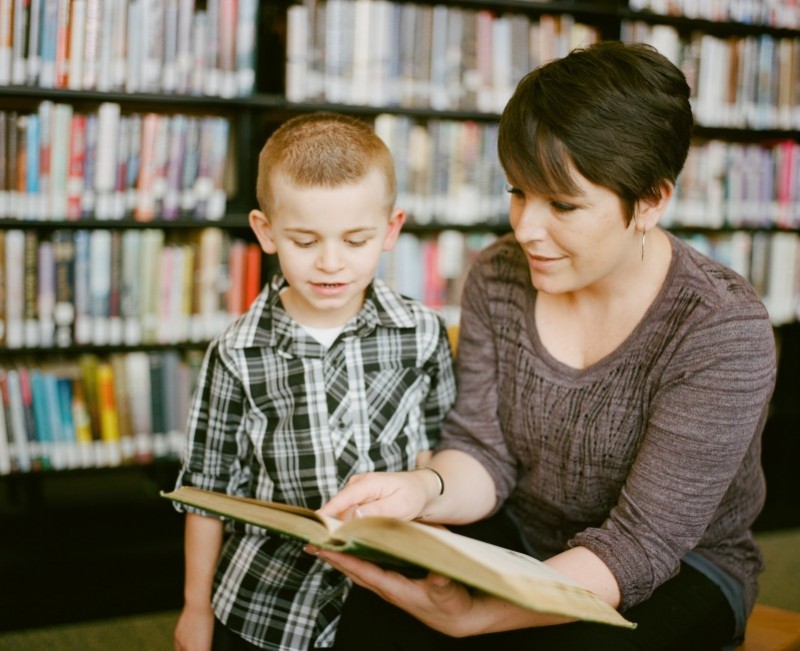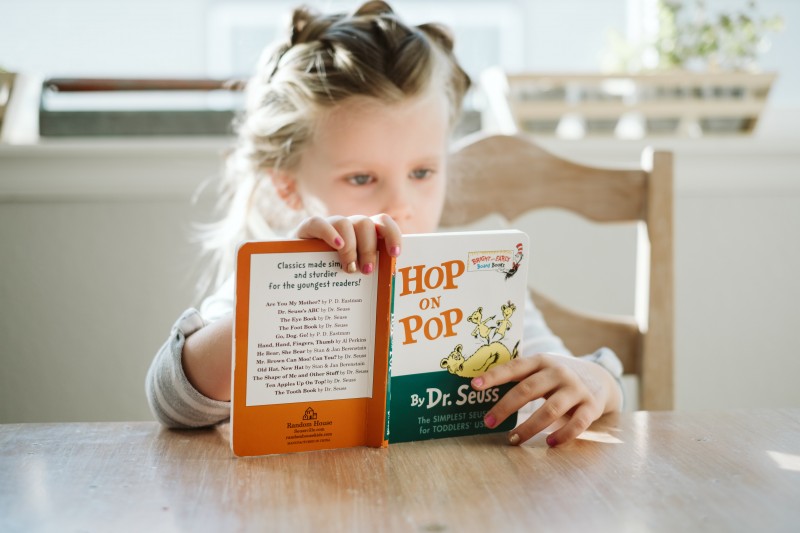The Rhythm for Reading blog
All posts tagged 'reading-fluency'
Reading fluency: Reading, fast or slow?
20 September 2023
The smarter you get, the slower you read,
says Naval Ravikant - a leading investor in the world of tech giants.
Yes, an appetite for absorbing the detailed content of a piece of text does lead to slower and closer reading. In fact, fluent reading is likely to vary in pace depending on the style of the writing. It’s a bit like driving in traffic. For conditions that demand sharp focus and concentration, we slow our driving down. Likewise, when we have more favourable conditions, we can drive with greater ease and enjoy the journey more. But no matter what the conditions are like, we don’t become reckless. We don’t lose control of any part of the driving. Let’s discuss this in relation to early reading, the development of reading fluency, and how it is taught.
Is it better to read quickly or slowly?
The most proficient readers adapt their reading skills to match the text. In other words, being able to dial the reading speed up and down is a strong indicator of emerging reading fluency. Schools ensure that all children become confident fluent readers, so that every child can access a broad and balanced curriculum. Fluent reading underpins a love of reading and is an important skill for future learning and employment and it also enables children to apply their knowledge and skills with ease.
In the early reading phase, children learn to remember what they’ve been taught and to integrate new knowledge into larger concepts. In other words, children learn to coordinate different streams of information. This is a bit like learning to drive (for an adult), because many different elements need to be coordinated and practised until these become second nature - such as:
- selecting and operating either the brake or the gas pedal
- steering the vehicle smoothly
- communicating direction using the indicators
- anticipating the speed of travel
- aligning speed with changes involving gears and the clutch
- monitoring what other vehicles, cyclists and pedestrians are doing on the road.
Fluent readers can:
- read accurately and with appropriate stress and intonation
- coordinate different streams of information very easily
- access each channel of information with ease
- read quickly, but adjust the speed of reading to suit the challenges of each passage
- monitor the meaning of the passage as they read.
In early reading, children who approach reading fluency without undue effort have coordinated their eyes, ears and voices:
- to appraise cues from pictures accompanying the passage
- to apply short term memory in order to locate the information in the passage in terms of time and place (context),
- to recall general knowledge from long term memory of how things happen (schema)
- to recognise the shapes of letters (graphemes)
- to discern the smallest sounds of language (phonemes)
- to articulate the relationship between the letter shape and its sound.
- to decode the words and to assign the grammatical function of each word in the sentence
- to access the lexicon (a child’s ‘word bank’) in order to retrieve the most likely words to match the information on the page.
Some of these channels of information are processed subconsciously and therefore at lightning speed. For example, the child’s lexicon (word bank) supplies the word that is the best match to the information on the page. The streams of information that contribute to the retrieval of a certain word are:
- word shape,
- sounds associated with the letters,
- context in short term memory
- schema (background knowledge) in the mind of the child.
In the earliest stages of learning to read, as the child learns to processes information about letters and sounds, they do this relatively slowly and consciously, using the thinking part the brain. It’s important that children allow the knowledge that they acquire during phonics training to inform their recognition of words, because after a period of initial ramping up and practice, it’s vital that this skill becomes second nature and that the speed of processing rapidly accelerates.
Fluent readers can read quickly, accurately and with appropriate stress and intonation, which aids comprehension by freeing up cognitive resources sufficiently to focus on meaning. Therefore, after the children have achieved a secure knowledge of phonics, fluency becomes an increasingly important factor in the development of reading comprehension.
However, many children experience ‘bumps in the road’ when they’re learning to read. They may have some stronger and some weaker channels of information processing. If there are weaknesses in attention, phonological discrimination or visual discrimination, the child will not be able to coordinate the many different channels of information that contribute to fluent reading.
What is reading word-by-word?
Reading word-by-word typically occurs among the lowest 20% of children: those who most need to improve in their reading. They need to refresh their attention for each word, as even reading an individual word can absorb all of their focus and attention.
Their fluency will not develop alongside that of their classmates and they will fall behind unless they receive an early reading intervention. Some teachers of reading assume that the skill of segmenting and blending phonemes is necessary for reading fluency to develop.
Actually, many children remain stuck at the ‘sounding-out’ stage of reading and do not become fluent readers, even though they know the correspondence between letters and their sounds. For these children, it’s likely that their attention is weak, and they lack the cognitive control to coordinate the various streams of information processing that support reading fluency.
What is speed reading?
Speed reading is measured in terms of how many words a person can read in one minute. This is known as words per minute (wpm).
Speed reading has been associated with having a higher level of intelligence, because people who read quickly are thought to consume more information and therefore become smarter. This association between speed reading and intelligence has led some teachers of reading to believe that reading faster is necessary for the development of good reading.
If building reading fluency were this simple, children with fast reading speeds would not -
- make accuracy errors
- need to reread the text to answer comprehension questions.
Although speed reading might appear attractive as an idea, and it is likely that a good reader can read fast, reading fast in itself does not necessarily develop into good reading.
Conclusion
At the heart of this is a huge misconception:
If a child prioritises speed, they may learn to decode the print into words, phrases and sentences. But, they may not have engaged with the grammar of the text.
As discussed, encouraging a child to read for speed may do more harm than good. If a child is praised for reading fast, they are more likely to experience reading as unrewarding, boring, a waste of their time and pointless.
If a child is encouraged to slow down and to discuss what has happened in each sentence, they will engage with the text as meaningful, even if they struggle to read independently. This communicative approach shows the children that they are reading in order to learn. Therefore, interactions between an adult and a child that involve talking, reasoning and extending spoken vocabulary are highly valuable, and they have been found to have significant effects on the development of early reading.
When reading at home with their children, parents can easily adopt these communicative approaches. Reading aloud is a good way of developing vocabulary as well as expressive language skills. They might also encourage their child to notice punctuation, the development of the narrative and any dialogue in the text.
Click here to see the full list of reading fluency tips in the Reading with Fluency Checklist.
If you’ve enjoyed this post, and you’d like to find out even more about the development of reading fluency, keep reading….
Reading fluency and comprehension in 2020 - here I discuss the relationship between resilience and fluency in relation to reading speed.
Discover the heartbeat of reading- this post explores the importance of bringing the grammatical cues in reading into systemic alignment.
Rhythmic elements in reading: From fluency to flow - a flow state is associated with reading for pleasure and fluency is a key to unlocking a flow state.
Musical notation, a full school assembly and an Ofsted inspection
10 January 2023Many years ago, I was asked to teach a group of children, nine and ten years of age to play the cello. To begin with, I taught them to play well known songs by ear until they had developed a solid technique. They had free school meals, which in those days entitled them access to free group music lessons and musical instruments. One day, I announced that we were going to learn to read musical notation. The colour drained from their faces. They were agitated, anxious and horrified by this idea.
No! they protested. It’s too hard.
After all these lessons, do you really think I would allow you to struggle? I asked them.
The following week, I introduced the group to very simple notation and developed a system that would allow them to retain the name of each note with ease, promoting reading fluency right from the start. This system is now an integral part of the Rhythm for Reading programme. It was first developed for these children, who according to their class teacher, were unable either to focus their attention or to learn along with the rest of the class.
After only five minutes, the children were delighted to discover that reading musical notation was not so difficult after all.
I can do it! shrieked the most excitable child again and again, and there was a wonderful atmosphere of triumph in the room that day.
After six months, the entire group had developed a repertoire of pieces that they could play together as a group and as individuals. It was at this point that Ofsted inspected the school. The Headteacher invited the children to play in full school assembly in the presence of the Ofsted inspection team. They played both as a group and as soloists. Each child announced the title and composer of their chosen piece, played impeccably, took applause by bowing, and then walked with their instrument to the side of the hall. At the end of the assembly the children (who were now working at age expectation in the classroom) were invited to join the school orchestra and sit alongside their more privileged peers. The Ofsted team placed the school in the top category, ‘Outstanding’.
If you would like to learn more about this reading programme, contact me here.

Rhythm, phonemes, fluency and luggage
12 December 2022
Louis Vuitton began his career in logistics and packing, before moving on to design a system of beautiful trunks, cases and bags that utilised space efficiently and eased the flow of luggage during transit. He protected his designer luggage using a logo and geometric motifs. The dimensions of each piece differed in terms of shape and size, and yet it was undeniable that they all belonged together as a set - not only because they matched in appearance, but also because each piece of the set could be contained within a larger piece. In fact, the entire set was designed to fit into the largest piece of all.
The grammatical structures of language and music share this same principle that underpinned the Louis Vuitton concept. In a language utterance, the tone, the pace and the shape of the sound waves carry a message at every level - from the smallest phoneme to the trajectory of the entire sentence.
The shapes of individual syllables are contained within the shapes of words. The shapes of words are contained within the shapes of phrases and sentences. Although these are constantly changing in real time - like a kaleidoscope, the principle of hierarchy - a single unit that fits perfectly within another remains robust.
In music, the shapes of riffs, licks, motifs, melodies and phrases are highly varied, but the hierarchical principle remains a constant here too. The musical message is heard in the tone, the pace and the shape of the smallest and largest units of a musical phrase.
Just as Vuitton used design to create accurate dimensions at every level of his luggage set, the same degree of precision is also achieved at a subconscious level in spoken language and in music. A protruding syllable, the wrong emphasis or inflection can throw the meaning of an entire sentence out of alignment. A musical message is similarly diluted if a beat protrudes, is cut short or is lengthened, because the length and shape of an entire phrase is distorted.
Arguably, the precise dimensions in Vuitton’s groundbreaking designs reflect a preference for proportion and balance that also underpins human communication involving sound. Our delight in the consummation of symmetry, grammar and rhyme is present in the rhythm of language and also in music. At a conceptual level, it is ratio that unifies the Vuitton designs with language and music, and it is ratio that anchors our human experience in interaction with one another and our environment.
This concept of ratio, as well as hierarchical relationships and the precision of rhythm in real time underpin the Rhythm for Reading programme. Think of this reading intervention as an opportunity to reorganise reading behaviour using a beautiful luggage set, designed for phonemes, syllables, words and phrases. It’s an organisational system that facilitates the development of reading fluency, and also reading with ease, enjoyment and understanding.
Three factors to take into account when assessing reading comprehension.
28 November 2022
In the Rhythm for Reading Programme, progress in reading is measured using the Neale Analysis of Reading Ability 2nd edition revised (NARA II). Reading comprehension is one of three standardised measures in this reading assessment. There are many good assessments available, but I’ve stuck with this one because it offers three supportive features that I think are particularly helpful. If you are unfamiliar with NARA II, let me paint a picture for you. Detailed illustrations accompany each passage of text. For a child grappling with unfamiliar vocabulary or weak decoding, the illustrations offer a sense of context and I’ve seen many children’s eyes glance over to the illustration, when tackling a tricky word.
In practice, children come out of class one at a time for individual reading assessment. Each reading assessment lasts twenty minutes on average. The main advantage of an individual assessment over a group assessment is that the assessor is permitted to prompt the child if they get stuck on a word. In fact the assessor can read the tricky word after five seconds have elapsed, which helps the child to maintain a sense of the overall narrative. This level of support is limited by the rigour of the assessment. For example, an assessor would not give the definition of a word if a child asked what it meant and sixteen errors in word accuracy on a single passage of text signals the end of the assessment.
This particular individual format is more sensitive that all others in my opinion, because it minimises the influence of three cognitive factors on the scores.
Factor one: There is minimal cognitive loading of working memory as the child can refer back to the text when answering questions. In other words, they do not need to remember the passage of text, whilst answering the questions. This approach prevents a conflation between a test of comprehension and a test of working memory. Children may score higher on NARA II if working memory is likely to reach overload in other reading test formats, for example, if the child is required to retain the details of the text whilst answering comprehension questions.
Factor two: There is no writing involved in NARA II, so a child with a weak working memory achieves a higher score on the NARA II than on other formats if writing in sentences is a specific area of difficulty for them.
Factor three: The assessor keeps the child focussed on the text. This makes a big difference if a child is likely to ‘zone out’ frequently and to experience scattered or fragmented cognitive attention. In this instance, a child with weak executive function is more likely to achieve a higher score on the NARA II than on other formats, because of the support given to scattered or fragmented attention.
At the end of the ten weeks of our reading intervention, children have achieved higher scores not only in NARA II, but also in the New Group Reading Test and the Suffolk Reading Scales. Many children experience gains in cognitive control as well as reading fluency and comprehension.
Rhythm, flow, reading fluency and comprehension
20 November 2022In extant societies that live as hunter-gatherers, loud communal singing and drumming creates the illusion of a large coherent entity, large enough to deter big cats that predate on the darkest of nights. Arguably, communal singing through the night may be a key human survival strategy. There’s evidence to show that feelings of cooperation and safety are experienced when humans sing and dance together and many people report being able to sustain hours of music making, when in a group. Other species such as birds and fish deter predators by forming a large mass of synchronised movement patterns. Murmurations form before birds roost for the night and shoals of herrings achieve the same mesmeric effect when they are pursued by predators such as sea bass.
Detecting rhythm and moving in time creates a trance-like state, which allows the perception of time to shift such that the focus narrows onto staying in time with the beat of others, nearby. Anticipating what will happen next is a key element of this narrow focus. If we break that down, it involves anticipating the regularity of the beat, whether within simple or complex rhythmic patterns.
Reading for pleasure can be framed as a social situation in which the reader synchronises with the writer’s style. To ‘get into a book’ we need to achieve a flow state - which is a trance-like state resulting in relatively narrow focus. This means everything else, but the book (or screen) disappears from our attention. The entranced state induces reading fluency and comprehension, drawing us deeper into the text where we might feel that we have ‘escaped’. To escape into a book means to suspend our usual sense of who we are, having become engrossed with the text, perhaps by empathising with the characters, or simply by synchronising with the flow of the writing. A close level of synchrony between the words on the page, and our anticipation of what comes next is arguably similar to the defensive mechanism of creating a larger entity in real time because it involves losing the usual sense of self and becoming part of something larger than day-to-day life - which brings us all the way back to communal singing and dancing.

Sensitivity to rhythm is all around us
14 November 2022A few weeks ago, in an inset session at a wonderful school with beautiful inclusive approaches in their group teaching, I mentioned that rats have the same limbic structures as humans. The limbic system is the part of the brain that deals with our mammalian instincts. These keep us in tune with social information, such as social status and hierarchy, protecting and nurturing our children, bonding with sexual partners and managing affiliation. It’s a logical assumption that if we share these limbic structures, rats like humans should be able to keep time with a musical beat - or their equivalent of that. So, it was no surprise to learn that Japanese researchers have shown that rats can indeed bob along and keep time with a musical beat.
It was back in the 1980s, when American scientists first discovered the genes that determined the rhythm of the mating song of fruit flies. If we think of rhythm as a musical trait exclusive to humans, these findings in rats and flies are simply amusing, novel or entertaining. On the other hand, the bigger picture behind these findings would suggest that the natural world is inherently structured by environmental and behavioural patterns organised by rhythm. If we think of rhythm as a system of ratios, proportions and repetition, then the math of rhythm is obvious. There are cycles and rhythmic flows in tides and weather systems and indeed, migration patterns follow these cycles. In individual organisms, as well as in shoal, pod, flock and herd movement, rhythmic patterns underpin locomotion and communication. Even a human infant’s stepping reflex is organised around the inherent rhythmic systems that we share with many other species.
We humans are particularly happy when our stylised rhythms achieve a hypnotic effect, for example in Queen’s ‘We will rock you,’ - one of the songs used by the Japanese scientists to detect the sensitivity to rhythm in rats. Halfway through the Rhythm for Reading programme, this same rhythmic pattern appears and is always greeted with enthusiasm by teachers and children as a fun part of the reading intervention. Look out for the next post, which explains the connection between hypnotic rhythm, flow states, reading fluency and reading comprehension.

When Rhythm and Phonics Collide Part 2
11 November 2022In my last post I described a typical challenge facing a child with poor phonological awareness. Using a rapid colour naming test (CToPP2), it’s possible to identify that a weakness in processing the smallest sounds of language often occurs at the onset of a phoneme, in other words the onset of a syllable. Consonant blends and consonant digraphs are more affected, so, conflation between ‘thr’ and ‘fr’, or ‘cl’ and ‘gl’ is likely to happen and to impede the development of reading with ease and fluency.
The notion that sensitivity to both rhythm and the smallest sounds of language overlap in terms of data has been around for decades. A positive correlation between sensitivity to rhythm and phonemic sensitivity has been shown in many studies. It’s easy to understand that rhythm and phonological processing overlap if we consider that the start of a phoneme - the onset of a syllable is exactly where sensitivity to rhythm is measured - whether that’s the start of a musical sound or a spoken utterance.
Thinking for a moment about words that begin with a consonant, imagine focussing mostly on the vowel sound of each syllable, without being able to discern the shape of the initial phoneme with sufficient clarity. The sounds would merge together into a kind of ambient speech puddle.
Vowel sounds carry interesting information such as emotion, or tone of voice. They are longer (in milliseconds) and without defined edges. Now imagine focussing on the onset of those syllables. The consonants are shorter (in milliseconds), more sharply defined and more distinctive, leaving plenty of headspace for cognitive control. If consonants are prioritised, information flows easily and the message lands with clarity.
The Rhythm for Reading programme addresses these distinctions through group teaching that is fun and supports early reading in particular. Information processing is enhanced by sensitivity to rhythm because rhythm focusses attention onto the onset of the sound, which is where the details are sharpest. This kind of information processing remain effortless, easy and fluent.
If you’d like to know a little more about this, the details are summarised in a free infographic. Click here.

When Rhythm & Phonemes Collide
7 November 2022
Have you ever taught a child with weak phonological awareness? The differences between sounds are poorly defined and individually sounds are swapped around. A lack of phonological discrimination could be explained by conflation. Conflation, according to the OED is the merging of two or more sets of information, texts, sets of ideas etc into one.
One of the most fascinating aspects of conflation is that it can happen at different levels of conscious awareness. So, for example teenagers learning facts about physics might conflate words such as conduction and convection. After all, these terms look similar on the page and are both types of energy transfer.
Younger children might conflate colours such as black and brown as both begin with the same phoneme and are dark colours. The rapid colour naming test in the Comprehensive Test of Phonological Processing reveals such conflation. For instance, a child I assessed once as part of a reading intervention conflated brown and green. Any brown or green square in the assessment was named ‘grouwn’ (it rhymed with brown). She had conflated the consonant blends of ‘br’ and ‘gr’ and invented a name for both colours.
In the early stages of reading, conflation can underpin confusion between consonant digraphs such as ‘ch’ and ‘sh’. Another typical conflation is ‘th’, and ‘ph’ (and ‘f’). In all of these examples, the sounds are similar and they differ only on their onset - the very beginning of the sound.
A child with sensitivity to rhythm is attuned to the onsets of the smallest sounds of language. In terms of rhythmic precision, the front edge of the sound is also the point at which the rhythmic boundary occurs. Children with a well-developed sensitivity to rhythm are also attuned to phonemes and are less likely to conflate the sounds. Logically, cultivating sensitivity to rhythm would help children to detect the onsets of phonemes at the early stages of reading. Stay tuned for Part 2 and a free infographic..
